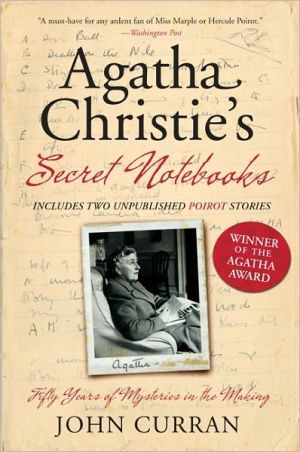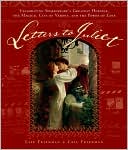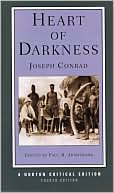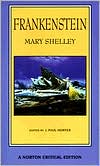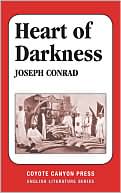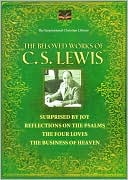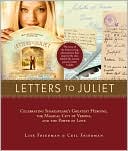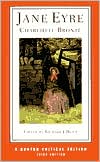Agatha Christie's Secret Notebooks: Fifty Years of Mysteries in the Making
When Agatha Christie died in 1976, at age eighty-five, she had become the world's most popular author. At the end of 2004, following the death of Christie's daughter, Rosalind, a remarkable legacy was revealed: seventy-three handwritten volumes of notes, lists, and drafts outlining all her plans for her many books, plays, and stories. Buried in this treasure trove, all in the beloved author's unmistakable handwriting, are revelations about her famous books that will fascinate anyone who has...
Search in google:
A fascinating exploration of the contents of Agatha Christie's seventy-three private notebooks, including illustrations and two unpublished Poirot stories When Agatha Christie died in 1976, at age eighty-five, she had become the world's most popular author. With sales of more than two billion copies worldwide, in more than one hundred countries, she had achieved the impossible—more than one book every year since the 1920s, every one a bestseller. So prolific was Agatha Christie's output—sixty-six crime novels, twenty plays, six romance novels under a pseudonym and more than one hundred and fifty short stories—it was often claimed that she had a photographic memory. Was this true? Or did she resort over those fifty-five years to more mundane methods of working out her ingenious crimes? Following the death of Agatha's daughter, Rosalind, at the end of 2004, a remarkable legacy was revealed. Unearthed among her affairs at the family home of Greenway were Agatha Christie's private notebooks, seventy-three handwritten volumes of notes, lists and drafts outlining all her plans for her many books, plays and stories. Buried in this treasure trove, all in her unmistakable handwriting, are revelations about her famous books that will fascinate anyone who has ever read or watched an Agatha Christie story. How did the infamous twist in The Murder of Roger Ackroyd really come about? Which very famous Poirot novel started life as an adventure for Miss Marple? Which books were designed to have completely different endings, and what were they? What were the plot ideas that she considered but rejected? Full of details she was too modest to reveal in her own autobiography, this remarkable new book includes a wealth of excerpts and pages reproduced directly from the notebooks and her letters, plus, for the first time, two newly discovered complete Hercule Poirot short stories never before published.The Barnes & Noble ReviewCall it a long-running literary mystery -- despite the tectonic influence and undimmed popularity of Agatha Christie's fiction (she is easily best-selling crime novelist of all time), serious consideration of her work and life seemed out of reach for decades. Recently, the case has been re-opened, thanks to Laura Thompson's thoughtful 2007 biography and now, the herculean and much appreciated efforts of arguably the Queen of Crime's most ardent and loyal fan, a jovial Irishman named John Curran.With the blessing of Mathew Pritchard, Christie's grandson and literary executor, Curran spent years sifting through seventy-three numbered, but otherwise uncategorized handwritten notebooks gathering dust in the author's old home, teasing out enticing morsels that suggest the methods by which Christie came up with her fiendish plots. The answer: not so much outright planning, but, rather, trial and error, with many characters' names changing over drafts, and even, at times, a last-minute change of ending: "her strengths lay in her unfettered mental fertility and her lack of system," Curran states, proving it with excerpts of notes ranging from The ABC Murders to Murder in Mesopotamia.Lest this book be regarded merely as catnip for hardcore fans, Curran has some genuine surprises in store for sceptical readers. For one, he lets his tongue loose on Christie's weaker efforts, citing "another unfortunate, and utterly unbelievable coincidence" that nearly derails The Mirror Crack'd From Side to Side, and the "jarring note" the tacked-on ending strikes in an otherwise "near-perfect" A Murder Is Announced. For another, the last Marple novel,Sleeping Murder, was long thought to be written in 1940, sealed in a vault until its publication a year after Christie's 1976 death. With detection skills straight from Poirot's "little gray cells" playbook, Curran shifts the probable date of composition by nearly a decade, closer to 1950.Finally, Curran's most astonishing feat is his discovery of two long-hidden short stories: "The Incident at the Dog's Ball", a charming early period Poirot story Christie never attempted to publish before she expanded it into the novel Dumb Witness; and an earlier, completely different and more politically pointed version of "The Capture of Cerberus", complete with references to Hitler and Poirot's open admiration of the female form! The net effect of Curran's years-long project is a virtual pilgrimage to the Christie homestead, sweeping readers up in his quest for the secrets that underpin Agatha Christie's mysterious literary logic.--Sarah Weinman
Acknowledgements 9\ Notes 11\ Foreword 13\ Preface 15\ Introduction 21\ 1 A Murder is Announced: The Beginning of a Career 29\ 2 Dumb Witness: The Evidence of the Notebooks 41\ Exhibit A The Detection Club 60\ 3 The Moving Finger: Agatha Christie at Work 66\ Exhibit B Other Crime Writers in the Notebooks 102\ 4 Cat among the Pigeons: The Nursery Rhyme Murders 105\ Exhibit C Agatha Christie in the Notebooks 159\ 5 Blind Man's Buff: A Game of Murder 162\ Exhibit D True Crime in the Notebooks 191\ 6 The Girl in the Train: Murder Aboard 195\ 7 Elephants Can Remember: Murder in Retrospect 217\ Exhibit E N or M? a Titles Quiz 257\ 8 Destination Unknown: Murder Abroad 259\ 9 In a Glass Darkly: The Unknown Christie 286\ Exhibit F The House of Dreams: Unused Ideas 303\ 10 Sanctuary: A Holiday for Murder 310\ 11 Poirot Investigates: The Labours of Hercules 346\ Exhibit G Murder is Easy: Seeds of Inspiration 369\ 12 The Body in the Library: Murder by Quotation 373\ Appendix: Swan Song - Two Last Stories 423\ The Capture of Cerberus 425\ The Incident of the Dog's Ball 453\ Agatha Christie Chronology 485\ Index of Titles 491
\ Washington Post"A must-have for any ardent fan of Miss Marple or Hercule Poirot."\ \ \ \ \ Newark Star-Ledger"A must for all Christie fans."\ \ \ Tulsa World"Provides a unique look into the mind and working habits of one of the world’s most successful authors."\ \ \ \ \ Irish Times"[Curran] has organized his material as efficiently as an Agatha Christie mystery….[His] enthusiasm for his subject carries us along."\ \ \ \ \ The Independent on Sunday“Many of Curran’s discoveries will shape how Christie is read in future....This book is fascinating.”\ \ \ \ \ Sunday Times (London)"A meticulously detailed study that is packed with shrewd perceptions about Christie’s fiction....Curran has produced an enthralling miscellany of a book, in which her fans will rummage to their heart’s content."\ \ \ \ \ Strand magazine“Meticulously detailed and scrupulous in its judgments.”\ \ \ \ \ The Independenton Sunday"Many of Curran’s discoveries will shape how Christie is read in future....This book is fascinating."\ \ \ \ \ Michael Dirda…a must-have for any ardent fan of Miss Marple or Hercule Poirot…For Agatha Christie's Secret Notebooks Curran has extracted all the literary material from this archive and arranged it thematically. Thus one chapter is devoted to the various murders based on children's nursery rhymes (e.g., A Pocketful of Rye), another on those geared to holidays (e.g., Death on the Nile). Curran transcribes the often enigmatic notes, then interprets them, drawing on his seemingly perfect recall for all of Christie's oeuvre.\ —The Washington Post\ \ \ \ \ Publishers WeeklyCurran, longtime literary adviser to the Agatha Christie estate, painstakingly describes and excerpts the private notebooks of one of the most influential names in detective fiction. Casual or even moderately well-versed fans of Christie may find themselves overwhelmed by the sheer volume of minutiae Curran extracts from the 73 notebooks the author maintained. His effort, however, is admirable: the majority of the notebook entries lack dates and often jump between novels and stories written years apart, and Christie's handwriting is at times akin to shorthand. The most fascinating aspect of the notebooks is the rare glimpse they allow into the mind of a writer, especially one as imaginative as Christie, who, though not a prose stylist, was expert at devising intricate plots. For example, in the notebooks, she poses questions to herself (“how should all this be approached?” “Who is killed?” and “Someone shot or stalked at school Sports?”) while mapping out the novel Cat Among the Pigeons. The inclusion of two rare short stories featuring Hercule Poirot makes this an appealing read for Christie-philes. B&w photos. (Mar. 1)\ \ \ \ \ Strand magazine on Agatha Christie's Secret Notebooks“Meticulously detailed and scrupulous in its judgments.”\ \ \ \ \ The Barnes & Noble ReviewCall it a long-running literary mystery -- despite the tectonic influence and undimmed popularity of Agatha Christie's fiction (she is easily best-selling crime novelist of all time), serious consideration of her work and life seemed out of reach for decades. Recently, the case has been re-opened, thanks to Laura Thompson's thoughtful 2007 biography and now, the herculean and much appreciated efforts of arguably the Queen of Crime's most ardent and loyal fan, a jovial Irishman named John Curran.\ With the blessing of Mathew Pritchard, Christie's grandson and literary executor, Curran spent years sifting through seventy-three numbered, but otherwise uncategorized handwritten notebooks gathering dust in the author's old home, teasing out enticing morsels that suggest the methods by which Christie came up with her fiendish plots. The answer: not so much outright planning, but, rather, trial and error, with many characters' names changing over drafts, and even, at times, a last-minute change of ending: "her strengths lay in her unfettered mental fertility and her lack of system," Curran states, proving it with excerpts of notes ranging from The ABC Murders to Murder in Mesopotamia.\ Lest this book be regarded merely as catnip for hardcore fans, Curran has some genuine surprises in store for sceptical readers. For one, he lets his tongue loose on Christie's weaker efforts, citing "another unfortunate, and utterly unbelievable coincidence" that nearly derails The Mirror Crack'd From Side to Side, and the "jarring note" the tacked-on ending strikes in an otherwise "near-perfect" A Murder Is Announced. For another, the last Marple novel,Sleeping Murder, was long thought to be written in 1940, sealed in a vault until its publication a year after Christie's 1976 death. With detection skills straight from Poirot's "little gray cells" playbook, Curran shifts the probable date of composition by nearly a decade, closer to 1950.\ Finally, Curran's most astonishing feat is his discovery of two long-hidden short stories: "The Incident at the Dog's Ball", a charming early period Poirot story Christie never attempted to publish before she expanded it into the novel Dumb Witness; and an earlier, completely different and more politically pointed version of "The Capture of Cerberus", complete with references to Hitler and Poirot's open admiration of the female form! The net effect of Curran's years-long project is a virtual pilgrimage to the Christie homestead, sweeping readers up in his quest for the secrets that underpin Agatha Christie's mysterious literary logic.\ --Sarah Weinman\ \ \
